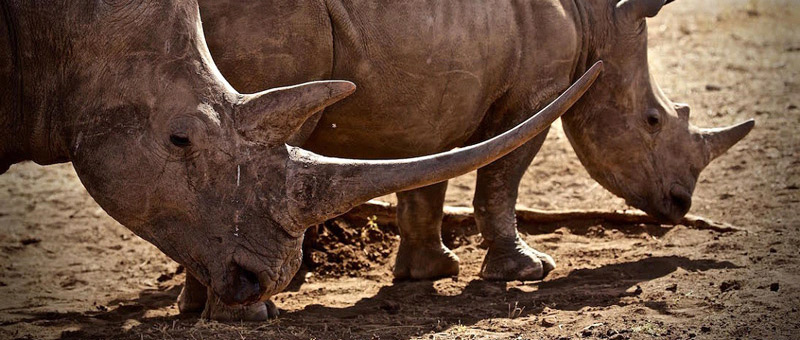BREAK THE LINK BETWEEN TERRORIST FUNDING AND POACHING
The Washington Post, 1st February
By Johan Bergenas and Monica Medina
Johan Bergenas is deputy director of the Managing Across Boundaries Initiative at the Stimson Center, a nonprofit and nonpartisan think tank that studies peace and security challenges around the world. Monica Medina is a former special assistant to U.S. defense secretaries Leon Panetta and Chuck Hagel.
There is a new threat in the terrorist hotbed of Africa, and the U.S. military can do much more to combat it. Poaching of endangered elephants and rhinos has become a conservation crisis, and profits from wildlife crimes are filling the coffers of terrorist organizations. The twin crises should be cause for alarm for military leaders, not just conservation groups. They need to start working together before it is too late.
In the past two years, about 60,000 elephants and more than 1,600 rhinos have been slaughtered by poachers, according to reports from the Wildlife Conservation Society, the International Union for Conservation of Nature and others. About a thousand park rangers have died in the past decade defending the animals.
A high-level summit on wildlife crimes, organized by the British government, Prince Charles and Prince William, is scheduled to take place this month in London. It is the perfect place to call for a new partnership between the defense and conservation communities.
As Obama’s national security team plans its next steps, it can follow Hillary Clinton’s lead. Before stepping down as secretary of state, Clinton commissioned an intelligence review of the impact of wildlife trafficking on national security. Completed last summer, the review prompted Obama to sign an executive order creating an interagency task force to develop an anti-poaching strategy. Due out this year, the strategy should include a greater military role in responding to this growing challenge.
Last year Congress gave the Pentagon permission to combat the Lord’s Resistance Army’s poaching and human-trafficking activities. That authority should be expanded to cover all terrorist groups, including al-Shabab.
Even without specific direction from Congress, the Defense Department and intelligence agencies should work with conservation groups to combat poaching, using new and inexpensive technologies to detect and deter terrorist activities and traffickers. Drones, satellite imagery, tracking devices and other high-tech tools could transform the fight to save elephants and rhinos, cheaply and effectively starving terrorists of the easy money they gain from wildlife crimes. Already, some African countries are asking for such tools.
Top U.S. defense officials should routinely discuss wildlife trafficking in meetings with African military leaders. The U.S. military’s post-Afghanistan plans must explicitly include poaching in Africa and illegal trafficking of wildlife as new “fronts” in the war on terror. Using technology to detect and deter poachers is a much less expensive way to fight terrorists than deploying Special Operations forces — and less dangerous to U.S. troops.
Finally, private-sector security and technology companies should be encouraged to work with African governments to deploy sensors, radars, unmanned aerial vehicles, satellites and other sophisticated data-gathering and detection systems. These types of defense technologies are needed to bolster borders, ports, roads, energy facilities and other economic infrastructure in Africa. Over the next few decades, the market for this infrastructure and societal security capacity is estimated to be at least $60 trillion, according to reports by McKinsey and others. By working now to protect African economic infrastructure, which includes endangered elephants and rhinos, technology companies could reap huge financial and public relations rewards.
Security technology, military capacity and market incentives are all waiting to be deployed to defeat terrorists and save wildlife in Africa — a huge potential win-win. Here’s hoping that Prince Charles and Prince William use this month’s summit to publicly call on military and industry leaders to join the fight to conserve rhinos and elephants.
The original article here:http://www.washingtonpost.com/opinions/break-the-link-between-terrorism-funding-and-poaching/2014/01/31/6c03780e-83b5-11e3-bbe5-6a2a3141e3a9_story.html





